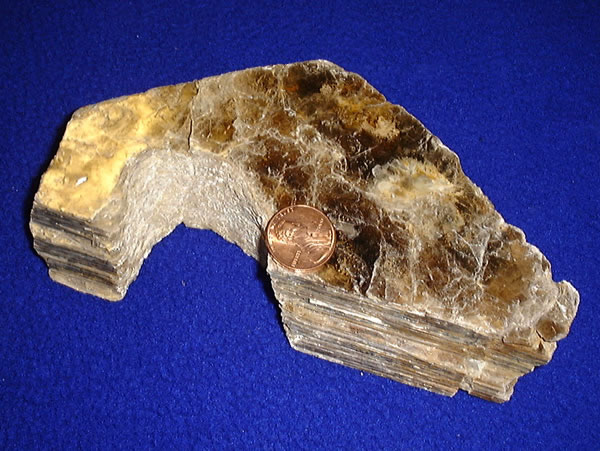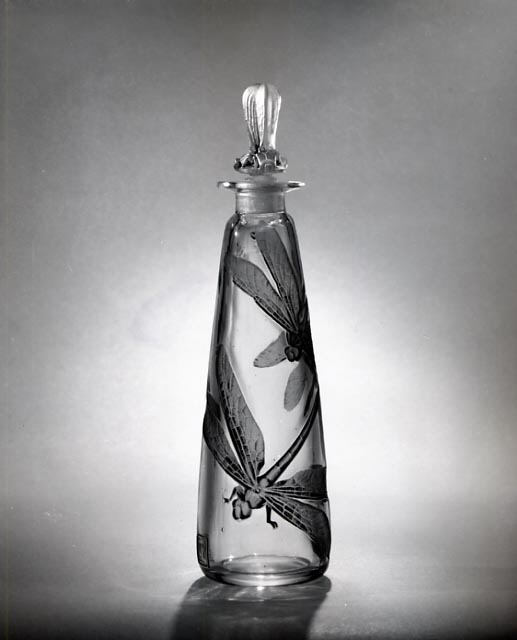|
Plique-à-jour
''Plique-à-jour'' (French for "letting in daylight") is a vitreous enamelling technique where the enamel is applied in cells, similar to cloisonné, but with no backing in the final product, so light can shine through the transparent or translucent enamel. It is in effect a miniature version of stained-glass and is considered very challenging technically: high time consumption (up to 4 months per item), with a high failure rate. The technique is similar to that of cloisonné, but using a temporary backing that after firing is dissolved by acid or rubbed away. A different technique relies solely on surface tension, for smaller areas. In Japan the technique is known as shotai-jippo (shotai shippo), and is found from the 19th century on. History The technique was developed in the Byzantine Empire in 6th century AD. Some examples of Byzantine plique-à-jour survived in Georgia (country), Georgian icons. The technique of plique-à-jour was adopted by Kievan Rus' (a strong trading ... [...More Info...] [...Related Items...] OR: [Wikipedia] [Google] [Baidu] |
Vitreous Enamel
Vitreous enamel, also called porcelain enamel, is a material made by melting, fusing powdered glass to a substrate by firing, usually between . The powder melts, flows, and then hardens to a smooth, durable vitrification, vitreous coating. The word ''vitreous'' comes from the Latin , meaning "glassy". Enamel can be used on metal, enamelled glass, glass, overglaze decoration, ceramics, stone, or any material that will withstand the fusing temperature. In technical terms fired enamelware is an integrated layered composite of glass and another material (or more glass). The term "enamel" is most often restricted to work on metal, which is the subject of this article. Essentially the same technique used with other bases is known by different terms: on glass as ''enamelled glass'', or "painted glass", and on pottery it is called ''overglaze decoration'', "overglaze enamels" or "enamelling". The craft is called "enamelling", the artists "enamellers" and the objects produced can be cal ... [...More Info...] [...Related Items...] OR: [Wikipedia] [Google] [Baidu] |
Cloisonné
Cloisonné () is an ancient technology, ancient technique for decorating metalwork objects with colored material held in place or separated by metal strips or wire, normally of gold. In recent centuries, vitreous enamel has been used, but inlays of cut gemstones, glass and other materials were also used during older periods; indeed cloisonné enamel very probably began as an easier imitation of cloisonné work using gems. The resulting objects can also be called cloisonné. The decoration is formed by first adding compartments (''cloisons'' in French) to the metal object by soldering or affixing silver or gold as wires or thin strips placed on their edges. These remain visible in the finished piece, separating the different compartments of the enamel or inlays, which are often of several colors. Cloisonné enamel objects are worked on with enamel powder made into a paste, which then needs to be fired in a kiln. If gemstones or colored glass are used, the pieces need to be cut o ... [...More Info...] [...Related Items...] OR: [Wikipedia] [Google] [Baidu] |
Mérode Cup
The Mérode Cup is a medieval silver-gilt cup decorated with finely engraved birds, fruit and vine leaves. It was made in France in Burgundy in about 1400, and was named after the ancient Belgian family of Mérode, to whom it once belonged. It is now in the Victoria and Albert Museum in London. The cup is made of silver-gilt and is decorated with finely engraved birds, fruit and vine leaves. In the sides, cover and base are panels of the fragile and exquisite translucent enamel made using , a difficult enamelling technique which involves firing the glass into cells and removing the backing to create an effect like stained glass. When the cup is placed on a shaft of light it appears to be set with miniature stained-glass windows. Pieces decorated with this sort of enamel are known from inventories of people such as the great fourteenth-century patron John, Duke of Berry, brother of king Charles V of France Charles V (21 January 1338 – 16 September 1380), called the Wise (; ... [...More Info...] [...Related Items...] OR: [Wikipedia] [Google] [Baidu] |
Metropolitan Museum Of Art
The Metropolitan Museum of Art, colloquially referred to as the Met, is an Encyclopedic museum, encyclopedic art museum in New York City. By floor area, it is the List of largest museums, third-largest museum in the world and the List of largest art museums, largest art museum in the Americas. With 5.36 million visitors in 2023, it is the List of most-visited museums in the United States, most-visited museum in the United States and the List of most-visited art museums, fifth-most visited art museum in the world. In 2000, its permanent collection had over two million works; it currently lists a total of 1.5 million works. The collection is divided into 17 curatorial departments. The Met Fifth Avenue, The main building at 1000 Fifth Avenue, along the Museum Mile, New York, Museum Mile on the eastern edge of Central Park on Manhattan's Upper East Side, is by area one of the world's list of largest art museums, largest art museums. The first portion of the approximately building ... [...More Info...] [...Related Items...] OR: [Wikipedia] [Google] [Baidu] |
Mica
Micas ( ) are a group of silicate minerals whose outstanding physical characteristic is that individual mica crystals can easily be split into fragile elastic plates. This characteristic is described as ''perfect basal cleavage''. Mica is common in igneous and metamorphic rock and is occasionally found as small flakes in sedimentary rock. It is particularly prominent in many granites, pegmatites, and schists, and "books" (large individual crystals) of mica several feet across have been found in some pegmatites. Micas are used in products such as drywalls, paints, and fillers, especially in parts for automobiles, roofing, and in electronics. The mineral is used in cosmetics and food to add "shimmer" or "frost". Properties and structure The mica group comprises 37 phyllosilicate minerals. All crystallize in the monoclinic system, with a tendency towards pseudohexagonal crystals, and are similar in structure but vary in chemical composition. Micas are translucent to opa ... [...More Info...] [...Related Items...] OR: [Wikipedia] [Google] [Baidu] |
Tiffany & Co
Tiffany & Co. (colloquially known as Tiffany's) is an American luxury goods, luxury jewelry and specialty design house headquartered on Fifth Avenue in Manhattan. Tiffany is known for its luxury goods, particularly its sterling silver and diamond jewelry. These goods are sold at Tiffany stores, online, and through corporate merchandising. Its name and branding are licensed to Coty Inc., Coty for fragrances and to Luxottica for eyewear. Tiffany & Co. was founded in 1837 by the jeweler Charles Lewis Tiffany and became famous in the early 20th century under the artistic direction of his son Louis Comfort Tiffany. In 2018, net sales totaled US$4.44 billion. , Tiffany operated over 300 stores globally, in many countries including the United States, Japan, and Canada, as well as Europe, Latin America, and the collective Asia-Pacific region, and is exploring opportunities in Africa. The company's product line features fine jewelry, sterling silver, watches, porcelain, crystal, ... [...More Info...] [...Related Items...] OR: [Wikipedia] [Google] [Baidu] |
Eugène Feuillâtre
Eugene is a common male given name that comes from the Greek εὐγενής (''eugenēs''), "noble", literally "well-born", from εὖ (''eu''), "well" and γένος (''genos''), "race, stock, kin". Henry George Liddell, Robert Scott, ''A Greek-English Lexicon'', on Perseus Gene is a common shortened form. The feminine variant is Eugenia or Eugenie. Other male foreign-language variants include: People Notable people with the given name Eugene or Eugène include:Christianity *Eugene or[...More Info...] [...Related Items...] OR: [Wikipedia] [Google] [Baidu] |
Lucien Gaillard
Lucien Gaillard (1861 – 1942, both in Paris, France) was a French goldsmith and jeweller, who worked in the art nouveau style. Lucien Gaillard was born into a family of jewellers. His grandfather Amédée Alexandre Gaillard (1811-1882) founded a jewellery firm in Paris in 1840, which he then passed on to his son Ernest (1836-1909). Lucien Gaillard trained as an apprentice under his father, before taking over the business in 1892. His brother Eugéne was also a well known art nouveau furniture designer. He was a contemporary of René Lalique. He won a prize for his jewellery at the 1889 Universal Exposition. He was also a judge at the 1893 Universal Exposition in Chicago. In 1902 he was made a knight of the Legion of Honour. He was deeply interested in Japanese art. His workshop included artists who travelled from Japan to work in ivory and lacquer. He also worked in copper. His workshop produced vases, cane heads, hair combs, pins and pendants as well as more traditio ... [...More Info...] [...Related Items...] OR: [Wikipedia] [Google] [Baidu] |
René Lalique
René Jules Lalique (; 6 April 1860 – 1 May 1945) was a French jeweller, medallist, and glass designer known for his creations of glass art, perfume bottles, vases, jewellery, chandeliers, clocks, and automobile hood ornaments. Life Lalique's early life was spent learning the methods of design and art he would use in his later life. At the age of two, his family moved to the suburbs of Paris, but traveled to Aÿ for summer holidays. These trips influenced Lalique later on in his naturalistic glasswork. With the death of his father, Lalique began working as an apprentice to goldsmith Louis Aucoc in Paris. Lalique died on 1 May or 5 May 1945, in Paris. René Lalique was buried in Père Lachaise Cemetery in Paris, France. His daughter Suzanne Lalique was the painter and set designer for the Comédie-Française. His son Marc Lalique continued the family business as a glass artist himself. It was under his impetus that the Maison Lalique began its transition from glass to cry ... [...More Info...] [...Related Items...] OR: [Wikipedia] [Google] [Baidu] |
Art Nouveau
Art Nouveau ( ; ; ), Jugendstil and Sezessionstil in German, is an international style of art, architecture, and applied art, especially the decorative arts. It was often inspired by natural forms such as the sinuous curves of plants and flowers. Other characteristics of Art Nouveau were a sense of dynamism and movement, often given by asymmetry or whiplash lines, and the use of modern materials, particularly iron, glass, ceramics and later concrete, to create unusual forms and larger open spaces.Sembach, Klaus-Jürgen, ''L'Art Nouveau'' (2013), pp. 8–30 It was popular between 1890 and 1910 during the Belle Époque period, and was a reaction against the academicism, eclecticism and historicism of 19th century architecture and decorative art. One major objective of Art Nouveau was to break down the traditional distinction between fine arts (especially painting and sculpture) and applied arts. It was most widely used in interior design, graphic arts, furniture, glass ... [...More Info...] [...Related Items...] OR: [Wikipedia] [Google] [Baidu] |




